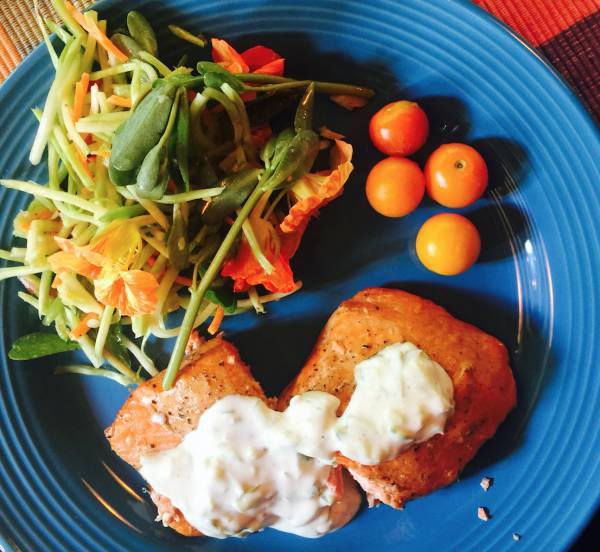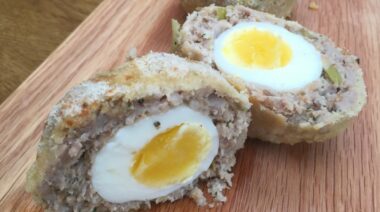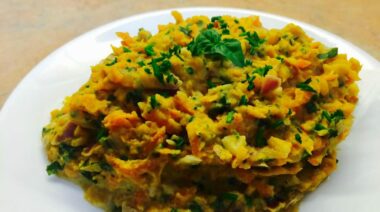Have you ever wondered why we go to the store to purchase lettuce? Looking around your yard, there are probably dozens of different plants growing. If some were edible, would they be that much different than lettuce or any other leafy plant we go to the store to purchase? The best tasting vegetable in my mind is called “free.”
Purslane as Food
Purslane, also called Portulaca oleracea, is a plant we consider a weed in the United States and it is found in most gardens. Believed to have come from a desert in North Africa, it has aggravated gardeners around the world because it can be rather invasive. It spreads out before it gets taller, so it can cover quite a bit of ground. I’m sure you have unknowingly seen it growing next to sidewalks or in gardens.
I’m not a fan of the term “superfood,” but compared to things like kale, quinoa, and acai berry, purslane deserves a mention. (I’m still not sure why kale is so popular. After all, as comedian Jim Gaffigan says, it tastes like bug spray.) Purslane, like every “new” diet idea, has actually been done before. People have been eating this plant for hundreds if not thousands of years in places like India, Turkey, and Greece.
A 100g serving of purslane boasts:
- 300-400mg of omega 3s (as ALA, alpha linolenic acid)
- 1.9mg of beta-carotene
- 26.6mg of vitamin C
- 14.8mg of glutathione
The omega 3 content puts purslane at the top of the list among veggies in the leafy green category. And glutathione is an important antioxidant, as is beta carotene. The beta carotene content in purslane is roughly equivalent to that of carrots, which are considered a primary source of the nutrient.
“Purslane, like every ‘new’ diet idea, has actually been done before. People have been eating this plant for hundreds if not thousands of years in places like India, Turkey, and Greece.”
Now, I’m not arguing one food over another. Purslane can be a great addition to a diet with an already large variety of vegetables. Environmentally speaking, it is much less damaging since it grows naturally in our backyards. It tastes similar to a peppery arugula, but has a bit thicker consistency as it carries a lot of water in the stems.
3 Ways to Enjoy Purslane
- Cut it into small pieces and use to top salads and coleslaw. The thicker, smoother texture is a nice complement to thinner greens.
- Sautee it with other veggies like broccoli, onion, and pepper and add it to an omelet in the morning.
- Use in stews and slow-cooker soups to thicken the broth. Purslane is high in pectin, which will help thicken liquid. It will also soften quite a bit and taste similar to sautéed spinach.

Note: After you’ve picked your purslane, always soak it in cold water for five minutes and pat it dry before eating. Since it comes from patches outside, who knows who or what touched it.
Now Go Outside and Get Some Free Greens
And that’s it. There are no exotic ways to use this “weed.” It can go in just about any recipe that needs a touch of flavor or a thicker texture.
Note: Foraging can be a lot of fun, especially when it means getting free veggies out of your backyard. But before you get too adventurous, be sure to find a class or someone who knows what to look for as we all know that eating plants from your environment can be dangerous.
More on green nutrition:
- Had Enough of Kale? Try These 5 Powerful Leafy Greens Instead
- 2 Healthy Dressings That Won’t Ruin Your Vegetables
- Tips and Tricks for Healthy Shopping on a Budget
- New On Pulse Beat Fit Today
References:
1. “Common Purslane,” United States Botanic Garden. Accessed July 17, 2015.
2. Simopoulos, A P, H A Norman, J E Gillaspy, and J A Duke. “Common Purslane: A Source of Omega-3 Fatty Acids and Antioxidants,” Journal of the American College of Nutrition 11, no. 4 (1992): 374-82.
3. Zhou, Yan-Xi, Hai-Liang Xin, Khalid Rahman, Su-Juan Wang, Cheng Peng, and Hong Zhang. “Portulaca Oleracea L.: A Review of Phytochemistry and Pharmacological Effects,” BioMed Research International: 1-11.
Photos courtesy of Shutterstock.






